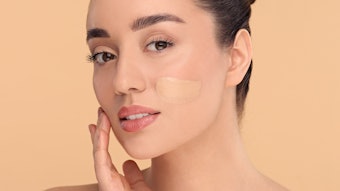Frutarom has expanded its skin care offerings with a traditional Chinese medicine-based (TCM) blend for acne, inflammation and oily skin. Z-Care (INCI: Scutellaria Baicalensis Root Powder (and) Portulaca Oleracea Extract (and) Chrysanthemum Indicum Flower Extract (and) Rheum Palmatum (Rhubarb) Root Extract (and) Dehydroacetic Acid (and) Benzyl Alcohol (and) Propylene Glycol (and) Water [aqua]) is a botanical solution aimed not only at inflammatory triggers but also inflammation itself to stop the cycle and prevent deeper lesions and scars.
In recent years, research has elucidated the role of excessive inflammation in acne development that leads to deeper lesions and scarring. According to the company, there are many triggers that initiate inflammation, such as bacterial activity, lipid oxidation and DNA damage. In addition, the company notes that inflammation itself is enhanced in a vicious cycle.
The concept behind this blend came about through a collaboration with TCM experts to build a balanced formula following TCM principles but backed with modern science. According to the tradition, TCM formulations contain an "emperor" that determines the effect, a "minister" that supports it, an "assistant" that prevents undesirable effects, and a "servant" that strengthens the formula power. According to the company, in this blend are four herbs assigned to these various roles. Rheum palmatum, as the emperor, possess anti-inflammatory activity; Scutellaria baicalensis, as the minister, protects DNA and thus prevents secondary damage that leads to enhancement of inflammation; Portulaca oleracea is renown for anti-irritant and skin healing properties thus serving as the assistant; and as servant, Chrysanthemum indicum protects the formula and skin from oxidative and UV damage.
The efficacy of the blend was established in vitro via clinical studies demonstrating anti-inflammatory and anti-acne activity as well as sebum-regulating effects. Compared with a salicylic acid control, the blend reportedly reduced acne lesions by 30% after only 12 days in a study of 28 women. In subjects not responding to the salicylic acid alone, the addition of the blend resulted in a significant improvement of the lesions. In a sebum-regulation test of 10 males, the sebum secretion was reduced by 26% after 21 days, compared to the baseline.










